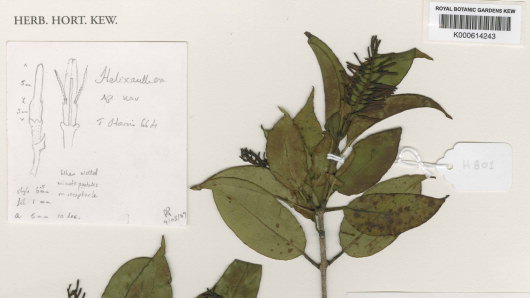It was spotted by Royal Botanic Gardens, Kew East African butterfly specialist, Colin Congdon, while the team were trekking up the mountain, on a path that took them from the moist montane forest up to where the broad granite peaks break through the dense foliage. Congdon says he quickly realized this species was different from anything he had seen on the mountains in neighboring Malawi and Tanzania, and on closer inspection back at Kew it was confirmed as a new species.
Tropical mistletoes, from the family Loranthaceae, are a great example of biodiversity and the symbiotic relationship between plants and animals. Birds play a vital role in both pollinating these mistletoes, and also distributing the seeds. As birds eat the small fleshy white sweet fruits, the seeds are then wiped on a branch to which they adhere. Once germinated the root grows into the living tissue of the tree to obtain the new plant's nutrients.
Tropical mistletoes are also popular with butterflies and in particular the blue group Lycaenidae. These strong links between the plants, their host trees, and various birds and butterflies, shows the interconnected nature of forest species, and the need to conserve all elements in order to preserve the environment.

Detail of Helixanthera schizocalyx holotype specimen collected from Mt Mabu by Tim Harris in 2008 (Image: RBG Kew)




Comments